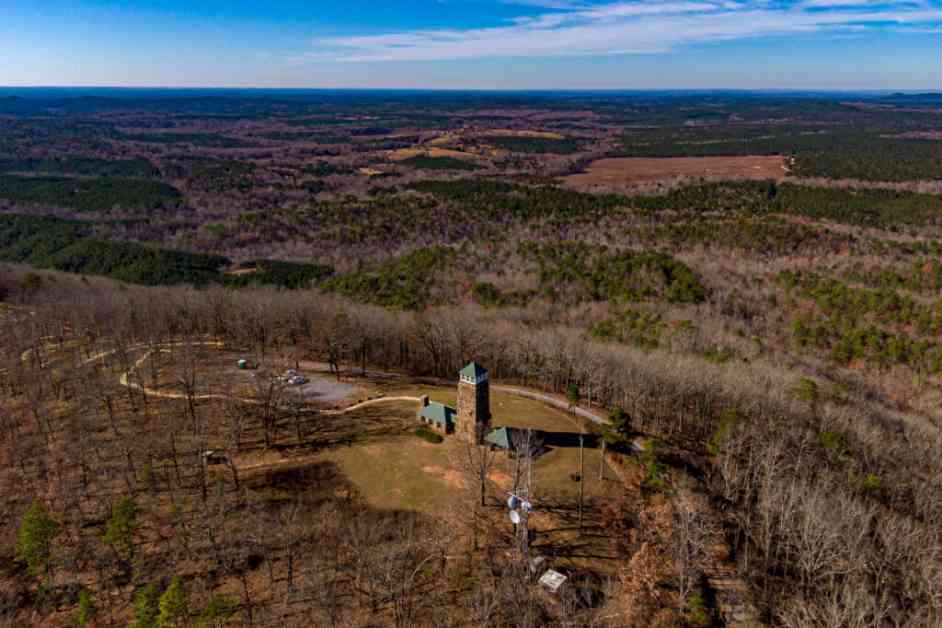WEOGUFKA, Ala.—Deep in the heart of east-central Alabama lies Flagg Mountain, home to the state’s oldest known tree, a towering longleaf pine that has stood the test of time for nearly 400 years. Despite its humble appearance, resembling a larger version of Charlie Brown’s Christmas tree perched precariously on a cliff face, this ancient tree holds a significant place in Alabama’s ecological, geographical, and cultural landscape.
Dating back to the 1620s, when Alabama was not yet a state, this longleaf pine has witnessed centuries of history, surviving the construction of a dirt road that now hugs its trunk, a relic of the New Deal era. John Goff, director of the Alabama Forestry Commission’s Forest Protection Division, marvels at the tree’s resilience, noting that it defies all odds by clinging to life amidst changing times.
Flagg Mountain itself is a vital landmark, serving as the southernmost peak over 1,000 feet in the Appalachian Mountain range that stretches from Alabama to Canada. The mountain marks the beginning of the Pinhoti Trail, a 335-mile hiking route that connects to the famed Appalachian Trail. Keith Tassin, deputy state director for the Nature Conservancy in Alabama, explains the significance of Flagg Mountain, where hikers can embark on a journey from Alabama all the way to Maine, earning the nickname ‘Bama to Baxter.’
A collaborative effort is underway to preserve Flagg Mountain and its surroundings, with recent acquisitions by the Nature Conservancy in Alabama and other organizations dedicating over 4,000 acres for conservation and recreational activities. The Maskoke indigenous people have established an ecovillage to reconnect with their heritage and protect the land they were once forced from. The restoration of the longleaf ecosystem at Flagg Mountain is a critical focus, as only a small fraction of this unique habitat remains intact today.
Tassin and conservationists are working to reintroduce controlled burns to the area, essential for the growth of longleaf pines and the ecosystem’s health. A recent natural fire highlighted the need for proactive management to prevent catastrophic losses of mature trees. The efforts to restore the longleaf ecosystem are crucial for the survival of species like the red-cockaded woodpecker, whose populations rely on this habitat.
As interest in Flagg Mountain grows, improvements to the infrastructure are being made to accommodate hikers and campers, with plans to promote outdoor activities in the region. The Forestry Commission is enhancing facilities to attract more visitors and boost tourism in Coosa County. The mountain’s inclusion in the state’s tourism campaign for 2025 showcases the potential for economic growth and environmental stewardship in the area.
In conclusion, the conservation of Flagg Mountain reflects a broader commitment to preserving Alabama’s natural heritage and promoting sustainable practices for future generations. The collaborative efforts of various stakeholders underscore the importance of protecting unique ecosystems and cultural landmarks, ensuring their longevity for years to come.














